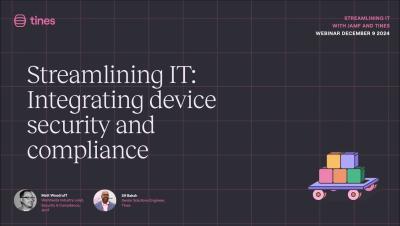Streamlining IT: Integrating device security and compliance with Jamf and Tines
Unlock the potential of automation to simplify and enhance Mac and mobile device security and compliance. Join us as we explore how Tines and Jamf work together to streamline critical tasks for IT and security teams. During the webinar, we covered: Whether you’re focused on device management and security or looking to reduce manual efforts, this session will provide valuable insights for how to optimize your workflows with Tines and Jamf.











